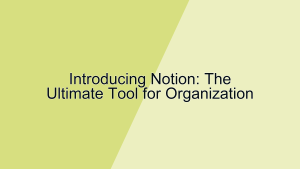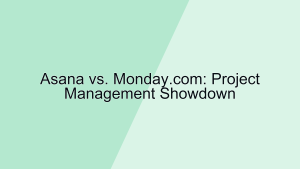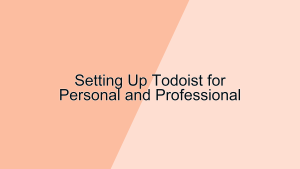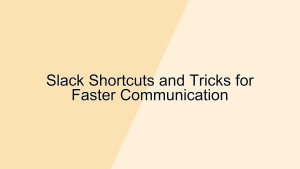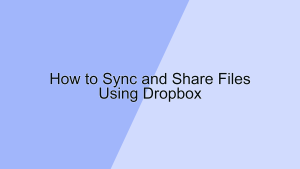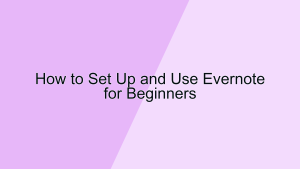First Impressions: Microsoft To Do
In the realm of task management applications, Microsoft To Do has garnered considerable attention. As a successor to Wunderlist, which was acquired by Microsoft, To Do aims to provide users with a seamless and efficient way to manage their tasks. This article explores the features, usability, and overall value of Microsoft To Do, offering a comprehensive first impression of the application.
Features
Microsoft To Do offers a range of features designed to enhance productivity and task management. Here are some of the key functionalities:
- Task Creation and Management
- Simple Task Entry: Microsoft To Do allows users to quickly add tasks with a straightforward interface. Users can enter tasks directly into the app, set due dates, reminders, and add notes. This simplicity is crucial for users who need to capture tasks on the go without navigating through complex menus.
- Recurring Tasks: One of the standout features is the ability to create recurring tasks. Users can set tasks to repeat daily, weekly, monthly, or at custom intervals. This feature is particularly useful for managing routine responsibilities, ensuring that important tasks are not forgotten.
- List Organization
- Custom Lists: Microsoft To Do enables users to create custom lists to organize their tasks. Whether it’s for work projects, personal errands, or specific goals, these lists help compartmentalize tasks and keep everything organized. Users can also color-code lists for easy identification and prioritization.
- My Day Feature: The “My Day” feature allows users to focus on tasks that need to be completed on a given day. Each morning, users can review their tasks and move relevant ones into the “My Day” section. This dynamic feature helps users stay focused on immediate priorities without feeling overwhelmed by their entire task list.
- Integration with Microsoft Ecosystem
- Outlook Integration: Microsoft To Do integrates seamlessly with Outlook, allowing users to sync tasks between the two applications. This integration means that tasks created in Outlook can appear in To Do and vice versa, creating a unified task management system across email and task lists. This feature is particularly beneficial for professionals who rely heavily on Outlook for their daily communications.
- Microsoft 365 Integration: As part of the Microsoft 365 suite, To Do integrates with other Microsoft applications like OneNote and Teams. This integration enhances collaboration and productivity, as users can link tasks to notes and projects within their broader work environment. For instance, a task in To Do can be linked to a meeting note in OneNote, providing context and ensuring that nothing falls through the cracks.
Usability
The usability of Microsoft To Do is one of its strongest points, designed to cater to both novice and advanced users. Here are some critical aspects:
- User Interface
- Clean and Intuitive Design: Microsoft To Do features a clean, user-friendly interface. The layout is straightforward, with tasks and lists easily accessible from the sidebar. This design minimizes distractions and allows users to focus on their tasks. The intuitive drag-and-drop functionality makes it simple to reorganize tasks and lists as needed.
- Customization Options: Users can personalize their experience with various customization options. From changing the background theme to setting custom notifications, these options allow users to tailor the app to their preferences. This level of customization enhances the overall user experience by making the app feel more personal and aligned with individual needs.
- Cross-Platform Accessibility
- Device Synchronization: Microsoft To Do syncs across multiple devices, including smartphones, tablets, and computers. This cross-platform compatibility ensures that users can access their tasks anytime, anywhere, and from any device. It’s particularly useful for users who need to manage tasks on the go, providing a consistent experience across different platforms.
- Offline Access: Even without an internet connection, Microsoft To Do allows users to access and manage their tasks offline. This feature is especially beneficial for those who travel frequently or work in areas with limited connectivity, ensuring that their task lists are always available when needed.
Value
When assessing whether Microsoft To Do is a valuable tool for task management, it’s essential to consider its overall value proposition. Here are some points to consider:
- Pricing
- Free Access: One of the most attractive aspects of Microsoft To Do is that it is available for free. Unlike many task management apps that require a subscription for full functionality, To Do offers a comprehensive set of features at no cost. This makes it an accessible option for individuals and small teams who need effective task management without incurring additional expenses.
- Value for Microsoft 365 Users: For users already invested in the Microsoft 365 ecosystem, To Do provides added value through its seamless integration with other Microsoft applications. This integration enhances the utility of the entire suite, offering a cohesive and efficient workflow that leverages the strengths of each application.
- Efficiency
- Time Management: Microsoft To Do’s features are designed to help users manage their time more effectively. The ability to organize tasks into lists, set reminders, and focus on daily priorities with the “My Day” feature can significantly improve productivity. By centralizing task management, users can streamline their workflow and reduce the time spent juggling multiple tools.
- Enhanced Collaboration: The integration with Microsoft Teams and other collaboration tools within the Microsoft 365 suite allows for better teamwork and coordination. Tasks can be shared with colleagues, and progress can be tracked collectively, making it easier to manage group projects and ensure that everyone stays aligned.
Conclusion
In conclusion, Microsoft To Do presents a compelling option for those seeking an efficient and user-friendly task management solution. Its simple task creation, robust list organization, and seamless integration with the Microsoft ecosystem make it a powerful tool for enhancing productivity. The clean and intuitive interface, combined with cross-platform accessibility, ensures that users can manage their tasks effectively, regardless of their location or device.
When considering the value of Microsoft To Do, its free access and integration with Microsoft 365 stand out as significant advantages. For individuals and small teams, the ability to use a comprehensive task management tool without incurring additional costs is highly appealing. Meanwhile, for Microsoft 365 users, the enhanced collaboration and workflow efficiency provided by To Do’s integrations add substantial value.
Overall, Microsoft To Do delivers on its promise to streamline task management and boost productivity. Whether you’re a professional managing work projects, a student organizing assignments, or someone looking to keep personal tasks in check, Microsoft To Do offers the tools needed to stay organized and productive. Its combination of simplicity, functionality, and integration makes it a worthy contender in the realm of task management applications.


